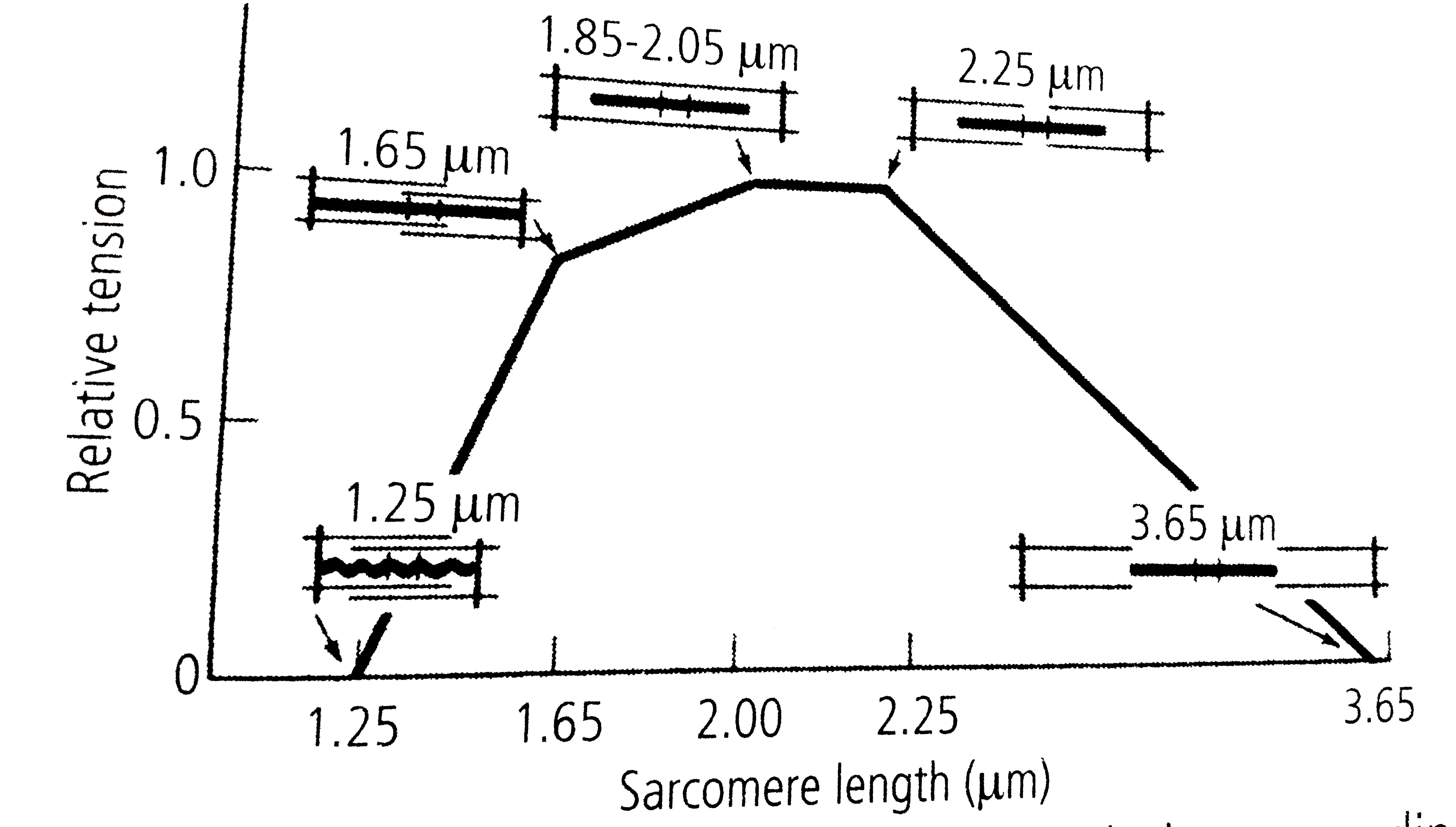Statements
A-bands of the muscle are dark and contain myosin
I-band are the light bands and contain action
During muscle contration the A-band contracts
The part between the two Z-lines is called as saromere
The central part of thin filament, not over-lapped by thick filament is called H-zone of the above statements.
1,2 and 3 are correct, 2 and 4 incorrect
1,3 and 5 correct, 2 and 4 incorrect
1,2 and 4 correct, 3 and 5 incorrect
1 and 2 correct, 3,4 and 5 incorrect.
The correct Answer is:C
Step by step video & image solution for Statements A-bands of the muscle are dark and contain myosin I-band are the light bands and contain action During muscle contration the A-band contracts The part between the two Z-lines is called as saromere The central part of thin filament, not over-lapped by thick filament is called H-zone of the above statements. by Biology experts to help you in doubts & scoring excellent marks in Class 12 exams.
Topper's Solved these Questions
- BOOK - DINESH PUBLICATION ENGLISHCHAPTER - LOCOMOTION AND MOVEMENTEXERCISE - CHECK YOUR GRASP10videos
LOCOMOTION AND MOVEMENT
- BOOK - DINESH PUBLICATION ENGLISHCHAPTER - LOCOMOTION AND MOVEMENTEXERCISE - CHECK YOUR GRASP10videos
LOCOMOTION AND MOVEMENT
- BOOK - DINESH PUBLICATION ENGLISHCHAPTER - LEAFEXERCISE - CYG10videos
LEAF
- BOOK - DINESH PUBLICATION ENGLISHCHAPTER - MAMMALIA [MAMMA - BREAST]EXERCISE - Brain Teasers - I100videos
MAMMALIA [MAMMA - BREAST]
Similar Questions
In a resting muscle,the central part of thick filament in a sorcomere is not overlapped by thin filament.This central part is called
View SolutionRead the given Statements for skeletal muscles
(i) Thin filaments are firmly attached to the Z - line .
(ii) The light band is also called the I - band and contains mostly actin.
(iii) A sarcomere is the functional unit of a myofibril between two adjacent A - bands .
(iv) The central part of the thick filament , not overlapped by the thick filament is called the H - zone
Which of these is/are CORRECT ?View Solution
Knowledge Check
- Question 1 - Select One
Consider the following statements each with one or two blanks.
(i) Repeated activation of the muscle can lead to the accumulation of (A) due to anaerobic breakdown of glycogen in them, causing fatigue.
(ii) The globular head of meromyosin is an active ATPase enzyme and has binding sites for (B) active sites for (C) .
This centre part of thick filament, not overlapped by thin filaments is called the (D) .
Which one of the following options correctly fils the concerned blanks ?A(A)-glucose, (D)-A-bandB(A)-pyruvic acid, (B)-troponin, (C)-myosinC(B)-ATP, (C)-actin, (D)-H-zoneD(A)-lactic acid, (D)-I-band - Question 2 - Select One
The given graph shows length-tension curve for a typical vertebrate sarcomere.

By analysing the graph, what can you deduce regarding the muscle contraction?
(i) Neither the myosin filaments nor the actin thin filaments change in length when a sarcomere shortens or is stretched. Instead, it is the extent of ocerlap between actin and myosin filaments that changes.
(ii) The total tension produced by a sarcomere is proportional to the total number of cross-bridges that can interact with actin filaments, and this number in turn is proportional to the amount of of overlap between thick and thin filaments.
(iii) The tension produced by the muscle is maximal when the overlap between thick and thin filamentss allows the largest number of myosin cross-bridges to bind to actin.
(iv) Tension drops off with increased lenght, because the thick and thin filaments overlap less and fewer cross-bridges can bind.
Tension drops off with decreased length, because thin filaments at the two ends of the secromere begin to collide with each other, preventing further shortening.A(i) OnlyB(i),(iii) and (iv)C(i),(iii),(iv) and (v)D(i),(ii),(iii),(iv) and (v)
Assertion : Contraction of a muscle fibre takes place by the sliding of the thin filaments over the thick filaments.
Reason : The central part of thick filament is not overlapped by thin filaments in a resting state.View SolutionRead the following statements (A to D) and select the one option that contains both correct statements.
A. Z-line is present in the centre of the light band.
B. Thin filaments are firmly attached to the M-line.
C. The central part of thick filaments, not overlapped by thin filaments is called Z-band.
D. Light band contains only thin filaments.View SolutionWhat happens to the l band and H zone during contraction? Do the lengths of the thick and thin filaments change ?
View SolutionRead the statement regarding myofibril and choose the correct option
1. Each myofibril has alternate dark and light bands.
2. In the centre of each 'A' band is an elastic fibre called 'Z' -line 3. 'A' and 'I' bands are arranged alternately throughout the length of myofibril
4. Sarcomere is the functional unit of contraction
5. Central part of thick filament not overlapped by a thin filament is the 'M' lineView SolutionGo through the following statements
During muscle contraction, the width of A-band remains constant while I-band shortens.
During muscle contraction, the Ca2+ released from the SR bind to the troponin component of thin filament
The process of muscle contraction is faster in smooth muscle as they have a well developed sarcoplasmic reticulum.
The red muscle fibres have abundant mitochondria, low glycogen and poorly formed sarcoplasmic reticulum.View SolutionRead the following statements and select the correct option :
I. In the skeletal muscles fibre, large number of myofilaments are arranged in the sarcoplasm.
II. The central part of an anisotropic band where the only thick , filament is present and thin filament is absent is called 'A' band.
III. In the resting state , a tropomyosin protein masks the active b binding sites for myosin on the active filaments .
IV. The junction between a motor neuron and the sarcolemma of the muscle fibres is called motor-end plate.View Solution

